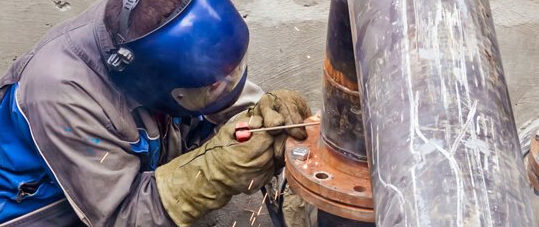As you advance through your welding career, you’ll be expected to be able to work on various jobs using various materials. By far the most difficult process you will come up against is pipe welding, where you will be expected to join cylindrical metal tubes using either gas shielded arc or SMAW welding processes.
Pipe welding is often an uncomfortable position and technique and is even worse if the pipe is in a restricted place. Welders who excel at this skill often go further with their welding career and earn high salaries than those who can’t perfect it. The certification which recognises this is called the 6G pipe welding certification. This certificate is the most recognised in the industry.
Pipe welding often uses thick and heavy-duty materials, the open root nature of the welds mean that penetration can be poor if not done correctly. Leaving a poorly penetrated weld on tough can turn out very badly, so you’ll need to ensure that you achieve full penetration.
Positions
On a pipe there is a sequence of letters and numbers which acts as a code. This indicates what joint type and position you need to use. In pipe welding positions, there are four main ones: 1,2,5 and 6.
- 1G – 1G is very uncommon. Its almost a flat weld because the pipe will be lying on its side and can be rotated if needed.
- 2G – This position is fixed, which means the pipe cannot be turned as you weld. This helps in the process of a weld because the pipe is much sturdier and more stable to work with.
- 5G – The 5G is similar to 1G in that the pipe is placed horizontally, except that it is fixed and cannot move. This requires the welder to weld in various positions including overhead.
- 6G – This is the most challenging, as mentioned before, because it involves the pipe being fixed in a 45-degree position. The is hard because it requires the welder to use both their left and right hand.
PCES are renowned worldwide suppliers of pipe handling, preparation, alignment, cutting and beveling machines. As well as pipeline welding supplies, they stock a range of pipeline construction equipment including power tools. To find out more about their pipeline welding supplies, click here: https://pces.uk.com/products/pipeline/

